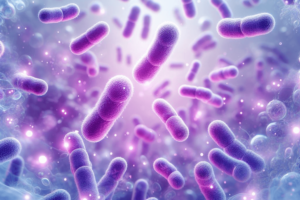Respiratory diseases are one of the most common medical conditions in India. Whether it be a common cold, asthma, or a more serious respiratory disease such as COPD. Respiratory disorders can make breathing challenging and significantly impact your quality of life. It becomes very important to understand respiratory disease symptoms, risk factors, and causes to control and prevent them at the right time.
What is Respiratory Disease?1
Lung is the organ which plays a vital role in exchanging gas flow in the complete human body; organs such as lungs, diaphragms and trachea (windpipe), etc all of them function together in a proper order creating a smooth airflow within the complete body.
When one suffers from respiratory disorder, the tissues and organs, which exchange oxygen and carbon dioxide, do not function properly. This can lead to decreased oxygen saturation level (SpO2). As a result, people who have been afflicted experience dizziness, disorientation, and bewilderment.
Restrictive vs. Obstructive Respiratory System2
Restrictive Lung disease, causes a decrease in the total volume of air that the lungs are able to hold, and is often due to a decrease in the elasticity of the lungs themselves or can be caused by a problem related to the expansion of the chest wall during inhalation. Some of the examples of restrictive lung diseases include pulmonary fibrosis, asbestosis and sarcoidosis. Symptoms of restrictive lung disease include shortness of breath, chest pain and wheezing.
Obstructive lung disease is one of the types of lung disease that occurs due to blockages or obstructions in the airways. In this condition there is less air flow in and out of the alveoli and fewer gas exchanges happen. Some of the examples of obstructive lung diseases include COPD, emphysema, asthma and cystic fibrosis. The main symptom of obstructive lung diseases is shortness of breath.
Different Types of Respiratory Disorders?3
Following is the list of some of the common respiratory problems developing breathing difficulties in the human body.
- Chronic Bronchitis: Chronic bronchitis is one of the types of inflammation in the breathing tubes or bronchi.
- Emphysema: The alveoli, or tiny air sacs in the lungs, deteriorate and may even rupture in the patients suffering from emphysema.
- Pleural Effusion: This condition is commonly referred as “Water on the lungs,” it occurs when surplus fluids build up between the pleural layers.
- Asthma: Due to chronic coughing or other factors, the windpipes swell and narrow, impairing a natural airflow in asthma.
- Chronic Obstructive Pulmonary Disease: COPD is one type of lung diseases that obstructs the air passage of the lungs, making it difficult to function effectively.
What are the Causes of Respiratory Diseases? 4
The most common causes of respiratory diseases are as follows:
- Allergies: Some people’s immune systems react very poorly to some specific chemicals, such as dust, pollen, or animal dander. When allergic people are exposed to these allergens, they may experience breathing difficulties.
- Viral infection: One of the main causes of respiratory disorders is viral infection. Some of the viruses can enter alveoli and can produce inflammation, such as respiratory adenoviruses, influenza viruses and respiratory syncytial viruses.
- Bacterial infection: Respiratory diseases can also be brought on by some of the bacteria, including sinusitis, otitis and pneumonia.
- Smoking and Air pollution: Smoking toxins and air pollution can cause damage to the lung’s alveoli (alveolar membrane). Therefore, it cannot properly immerse gaseous oxygen into the blood. As a result, the patients may experience discomfort and shortness of breath.
Some of the additional causes of respiratory diseases are as follows-
- Tuberculosis
- Abdominal and chest infection
- Chest trauma and consequent bleeding
- Inflammatory or autoimmune diseases
What are the Symptoms of Respiratory Diseases? 5
- Chest congestion
- Lack of energy
- Frequent respiratory infections
- Swelling in feet, ankle or legs
- Blueness in lips or cyanosis
- Unnoticed weight loss
- Fatigue due to oxygen shortage
- Shortness of breath
- Generation of cough that can be yellow, greenish or clear in colour
Who is at risk of developing respiratory diseases?
Some individuals are more susceptible than others to some of the respiratory disorders brought on by the respiratory system. Among them are:
- People with a history of heart disease in their families who are more susceptible to this illness.
- As people age, their risk of developing certain diseases increases. Most senior citizens are, therefore, more vulnerable to them.
- Respiratory diseases are very easily contagious in people with cardiovascular conditions. This is due to their heart’s inability to adequately pump oxygen-rich blood throughout the whole body.
- People suffering from asthma and habitual smokers are at the highest risk of COPD.
- Residents or employees who are more exposed to extremely polluted areas are likewise more vulnerable.
What are the common respiratory disease treatments? 6
- Pulmonary Rehabilitation: Many physicians guide patients in various strategies and different activities during pulmonary rehabilitation. One who practices these can see an improvement in their body’s oxygen levels.
- Supplemental Oxygen: Patients who have major respiratory issues may require assistance from a constant oxygen supply at home.
- Surgery: Some conditions, such as COPD and pleural effusion, necessitate surgery to remove the affected portion of the lungs.
- Nutrition Therapy: This type of therapy cannot be used as stand-alone therapy for some of the illnesses. In some cases doctors pay very close attention to their patients dietary needs. It can contribute to the healing process faster.
- Medications: Use of medications such as oral steroids, bronchodilators and antibiotics can be helpful to treat inflammation and widen the airways.
- Nutraceuticals7: Use of following
- Food and nutrients- Dietary fibers, vitamins, probiotics, polyunsaturated fatty acids and trace elements.
- Medicinal plant extracts: Adhatoda vasica, boswellia serrata, curcuma longa, Ivy leaf extract, ocimum sanctum and marshmallow extract.
What Measures Can be taken to prevent Respiratory Diseases?8
- Stay hydrated
- Consume well-balanced nourishing meals
- Maintain proper body hygiene
- Avoid contact with infected people
- Quit smoking and use of tobacco
- Practice social distancing
- Wash hands frequently and properly
Conclusion
Various types of diseases can cause trouble in life. Most of them are a result of excessive cell damage which can be caused due to regular smoking or because of consumption of chemicals. Few of the habitual changes such as staying away from these types of diseases, doing regular exercises and a nutrient rich diet will reduce the risk of diseases. Regular check-ups can help to keep a track of health status. One suffering from extreme weakness can consult doctors for appropriate treatment.
References:
- James DG. Respiratory diseases. Postgrad Med J. 1992 Mar;68(797):160-73. doi: 10.1136/pgmj.68.797.160. PMID: 1589373; PMCID: PMC2399254.
- Shah NS, Koller SM, Janower ML, Spodick DH. Diaphragm levels as determinants of P axis in restrictive vs obstructive pulmonary disease. Chest. 1995 Mar;107(3):697-700. doi: 10.1378/chest.107.3.697. PMID: 7874939.
- Debnath N, Kumar A, Yadav AK. Probiotics as a biotherapeutics for the management and prevention of respiratory tract diseases. Microbiol Immunol. 2022 Jun;66(6):277-291. doi: 10.1111/1348-0421.12980. Epub 2022 May 27. PMID: 35462444.
- Holland WW. Chronic respiratory diseases. J Epidemiol Community Health. 1993 Feb;47(1):4-5. doi: 10.1136/jech.47.1.4. PMID: 8436891; PMCID: PMC1059699.
- https://psrihospital.com/respiratory-diseases-symptoms-causes-and-risk-factors/
- Chang RYK, Wallin M, Lin Y, Leung SSY, Wang H, Morales S, Chan HK. Phage therapy for respiratory infections. Adv Drug Deliv Rev. 2018 Aug;133:76-86. doi: 10.1016/j.addr.2018.08.001. Epub 2018 Aug 7. PMID: 30096336; PMCID: PMC6226339.
- Gulati K, Rai N, Chaudhary S, Ray A. Nutraceuticals in respiratory disorders. InNutraceuticals 2016 Jan 1 (pp. 75-86). Academic Press.
- https://www.nanavatimaxhospital.org/blogs/understanding-different-types-of-lung-diseases







